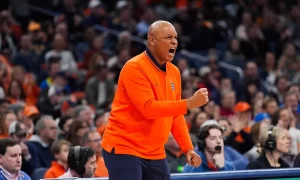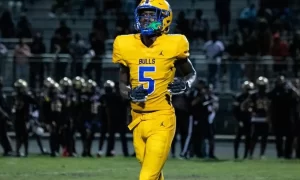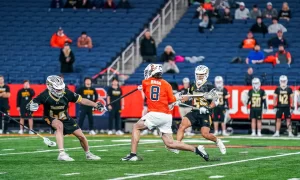This year belongs to Quincy Guerrier. The sophomore scored in double figures in each game this season, with the exception of the Pittsburgh loss, during which Guerrier was handcuffed to 17 minutes with foul trouble. So that’s nine games that Guerrer dominated the stat sheet, something he only did 11 times all of last year.
All this means that Guerrier is by far the most improved, and let’s be honest, the best player on the team. But the question on every pessimistic Syracuse fan’s mind after arguably his best game of the year against North Carolina is simple. Is he really this good?
The answer is emphatically yes. Sure, Guerrier shot 1-6 from range against the Tar Heels, but he is the most efficient threat from outside the Orange have at 37%. Guerrier would be the first one to admit, however, the three-balls falling aren’t what light up the stat sheet. Instead, it’s the threat.
North Carolina had to play up on Guerrier, giving him easy lanes to drive to the hoop. The Montreal native hasn’t gotten much faster from last year, but when defenses respect his perimeter game he doesn’t have to be much faster.
But this isn’t complex stuff. It’s common knowledge that a perimeter game helps the rest of a player’s offensive arsenal. The reason this monumental improvement is specific to Guerrier is because the rebounding carried over with it. It seemed obvious that the guy could rebound. While playing through a groin injury as a freshman, Guerrier ripped down 5.3 rebounds per game. This year, he’s averaging 9.5 rebounds per contest, which is good for second in the ACC.
So when Syracuse fans watch Guerrier, they’ll have to squint to find any cracks in his offensive game. At this juncture, he can pretty much do it all. While the numbers say he’s a better three-point shooter than he actually is, it doesn’t really matter. It’s not about what you can do. It’s about what your opponent thinks you can do.















